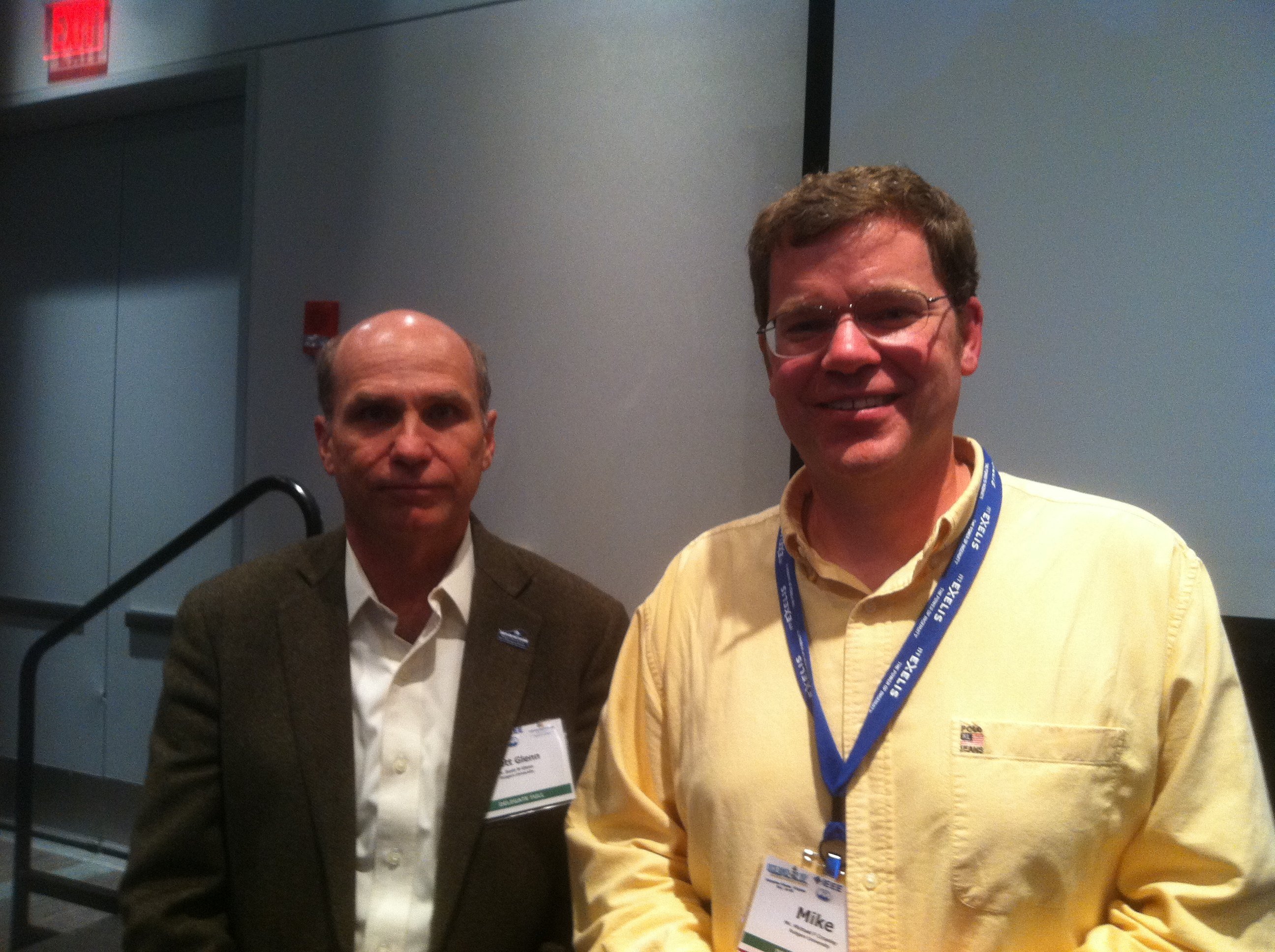OOI Scientists “IGNITE the Crowd” at Oceans 2012

(Click to enlarge) Dr. Scott Glenn, Principal Investigator for the EPE Implementing Organization and Mike Crowley, EPE Project Manager both gave talks on the importance of the use of observational data for learning purposes at the MTS/IEEE meeting in Virginia Beach, VA. ( Photo Credit – OOI Communications)
Oct. 14-19, the Ocean Observatories Initiative (OOI) participated in the MTS/IEEE annual meeting, OCEANS 2012, at the Virginia Beach Convention Center, Hampton Roads, VA. OOI participated as part of a larger Consortium for Ocean Leadership presence at the conference.
OCEANS 2012 brought together the technology, people, and ideas to help expand the understanding of the earth’s largest natural resource. Hampton Roads maritime heritage combined with its strategic location near key decision makers from the U.S. Government made this venue a perfect opportunity to address the challenges facing the world’s users of the ocean.
OOI scientists were represented at the conference in a special session hosted by the U.S. Integrated Ocean Observing System (IOOS) Program – “IGNITE the Crowd.” This was a fast-paced session of five minute talks by ten dynamic leaders in the ocean observing field. These leaders included two of OOI’s own – Scott Glenn and Mike Crowley from Rutgers, the State University of New Jersey.
– “IOOS and Hurricanes and Fish – Oh My!” – Dr. Scott Glenn
– “How Can We “Sea” the Ocean? – Building New Windows for Discovery” – Mike Crowley
“Before the talks Tuesday,” says Mike Crowley, Rutgers Project Manager for the OOI Education and Public Engagement (EPE) Implementing Organization “all ten authors agreed that preparing for them was the most stressful process we had ever gone through in preparing a talk, and these were all people with loads of experience giving science presentations. We were all feeling beyond nervous. But in the end, it all paid off. We received great feedback that folks really remembered key points of our talks the next day, when so many other talks blurred together. So, the process and format obviously paid off.”
A large focus of both talks was the importance of observational data not just for scientific discovery and understanding, but also for enhancing the education of the next generation of scientists. Glenn and Crowley are both a part of the OOI EPE team, which focuses on building tools to simplify the large stream of OOI observational data into a more integrated package that can be used for learning purposes. Glenn is the Principal Investigator of EPE and Crowley is the Project Manager.
“As the OOI develops and deploys transformative tools necessary to pursue our national research priorities,” says Mike Crowley, “it can also enable the effective translation of results into readily understandable information usable by educators and potential workforce participants. The education goals and the key science questions that frame the OOI infrastructure are tightly coupled; the science questions provide the interdisciplinary context for effective marine education that, in turn, develops the intellectual capital needed to build research capacity and a literate and engaged public.”
The OOI EPE team, led by Rutgers, is building a suite of software interfaces and web-based tools that will allow educators to bring the ocean into their learning environments. Rutgers, in leading the development of educational capabilities for the OOI, will leverage the OOI cyberinfrastructure capabilities by constructing a series of software and web-based social networking tools to engage a wide range of users.
“OCEANS 2012 was a great forum for OOI Education and Public Engagement team to present on our efforts to enable the use of near real time OOI data in undergraduate classrooms when the OOI data starts to flow,” says Scott Glenn, Rutgers Principal Investigator for the EPE Implementing Organization. “We are excited about our progress on development of a suite of infrastructure modules and will provide information on each of those areas.”
The OOI, a project funded by the National Science Foundation, is managed and coordinated by the OOI Project Office at the Consortium for Ocean Leadership, in Washington, D.C., and is responsible for construction and initial operations of the OOI network. Four major Implementing Organizations are responsible for construction and development of the overall program. Woods Hole Oceanographic Institution, Oregon State University and Scripps Institution of Oceanography are responsible for the coastal and global moored arrays and their autonomous vehicles. The University of Washington is responsible for regional cabled seafloor systems and moorings. The University of California, San Diego, is implementing the cyberinfrastructure component. Rutgers, The State University of New Jersey, is providing the education and public engagement software infrastructure.
Click here for more information on the OOI Education and Public Engagement. Please continue to visit the OOI Website for updates and other program news and events.
